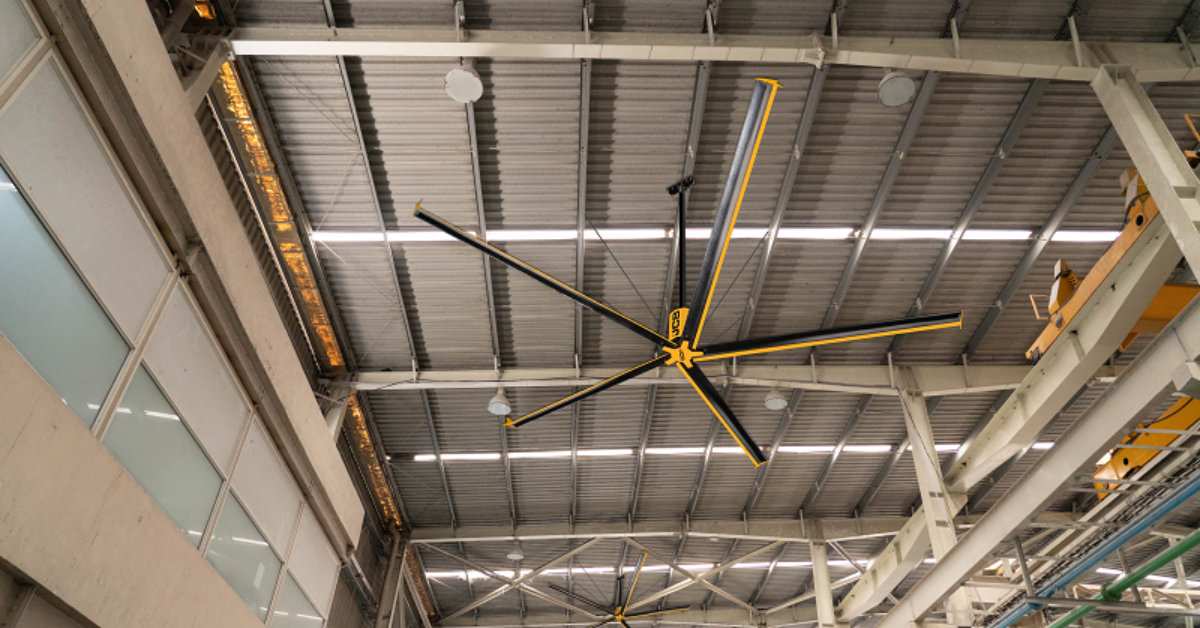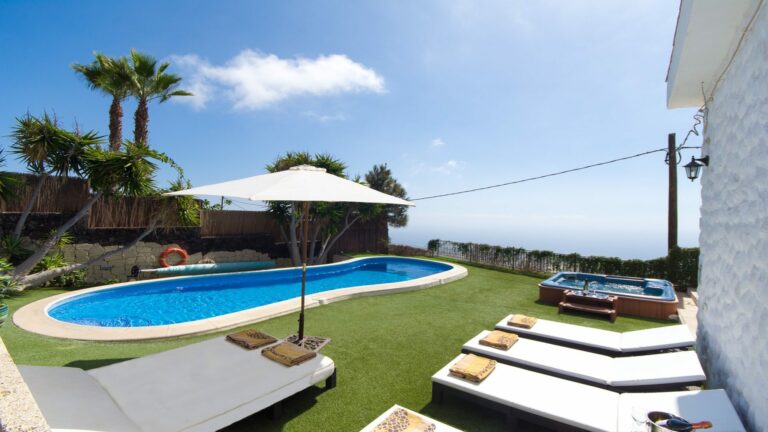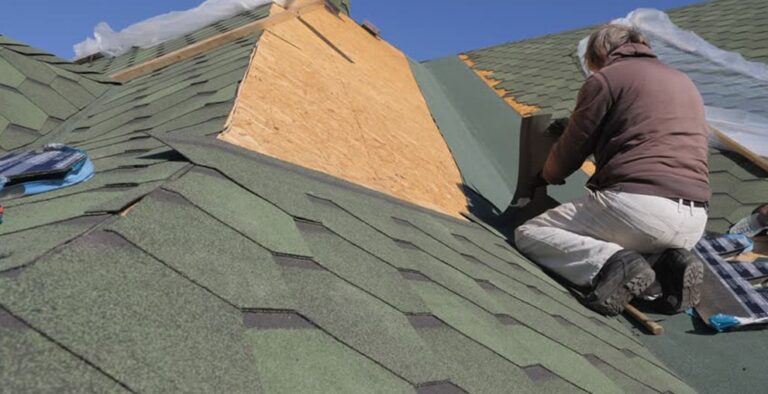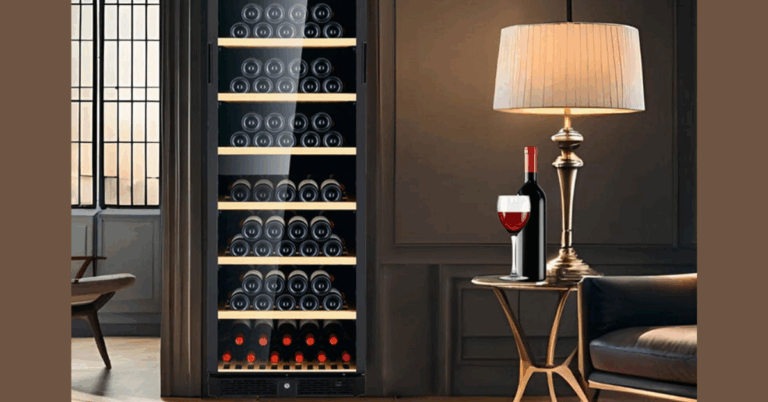Choosing the Right HVLS Fan Supplier in Singapore: What You Need to Know
When your industrial or commercial facility is hot, stuffy, or struggling with poor air circulation, one of the most effective solutions is to install a high-volume, low-speed (HVLS) fan. But simply picking any fan won’t do you need a reliable HVLS Fan Supplier Singapore to ensure high performance, durability, and proper service support. In this article, we’ll walk you through the essentials of selecting an HVLS fan supplier in Singapore, what features to look for, and how the right partner can make a big difference in your comfort, energy bills, and operations.
What Is an HVLS Fan And Why It Matters
HVLS fans are massive ceiling-mounted fans, usually ranging from 2.5 m up to 7 m in diameter, designed to move large volumes of air at low speeds. Rather than producing a powerful jet of air in one direction, they gently circulate air throughout a wide area, creating a cooling effect even at modest fan speeds. Because of their design, they can provide better comfort while consuming less energy compared to multiple smaller high-speed fans.
Some of the core benefits include:
-
Energy savings: By moving air more efficiently across a large footprint, they reduce reliance on conventional air-conditioning systems.
-
Improved ventilation: They help with air circulation, reduce hotspots, and improve comfort for staff or occupants.
-
Lower noise: Properly engineered HVLS fans are relatively quiet.
-
Durability and safety: As major structural equipment, they must endure long-term operation under varying loads, wind gusts, and vibration.
Because these fans are such critical infrastructure in large spaces — warehouses, factories, sports halls, poultry houses, retail halls, etc. — choosing the right supplier is just as important as choosing the fan itself.
Criteria for Selecting a Reputable HVLS Fan Supplier in Singapore
Here are the key criteria you should evaluate when vetting HVLS fan suppliers in Singapore:
1. Technical Expertise & Customization Capability
A good supplier should not just offer catalog models, but be able to tailor solutions to your facility’s specific needs. For example:
-
Custom diameters and blade profiles
-
Special control systems (variable speed, remote controls, sensors)
-
Structural integration, ceiling mounting, and mechanical supports
-
Aerodynamic simulation, load analysis, and vibration mitigation
This guarantees the fan fits your spatial, load, and operational constraints.
2. Proven Engineering and Testing Rigor
Because the fan blades and motors endure continuous torque, wind loads, and possible gusts, the supplier should demonstrate:
-
Finite element modeling (FEM) of blade and hub stress
-
Dynamic vibration testing
-
Laboratory fatigue tests
-
Use of strong fasteners, conical shafts, anti-fall plates, or other mechanical redundancies
These practices assure safety, longevity, and reliable operation.
3. Quality of Motor and Drive Components
High-quality HVLS fans often use brushless motors with integrated inverters (often called “motoinverters”). Features you should look for:
-
Direct-drive brushless motor (reduces mechanical complexity and maintenance)
-
Integrated inverter capability for variable speed
-
Low noise and high efficiency
-
Monitoring and control interface (e.g. digital control, smart connectivity)
These features allow smooth performance, energy savings, and longer equipment life.
4. After-Sales Support, Maintenance & Spare Parts
A top supplier provides more than just delivery and installation. Look for:
-
Scheduled maintenance plans
-
Spare parts availability (blades, drives, hubs, control units)
-
Local technical support team in Singapore
-
Warranty and service contracts
-
Training for in-house staff
HVLS fans are a long-term investment maintenance and service support are critical.
5. References and Local Projects
Always check the supplier’s history of installations in Singapore or the region. Ask for:
-
Project references in similar facility types
-
Performance data, especially energy savings
-
Customer testimonials
-
Site visits, if possible
This gives you confidence that the supplier understands local conditions (humidity, loading, ceiling heights, building codes).
6. Compliance, Safety & Certifications
Ensure the products comply with relevant standards or certifications in Singapore or internationally. Safety is crucial, so relevant quality standards, CE or other marks, and local compliance are important.
7. Pricing Structure & Total Cost of Ownership (TCO)
Don’t just focus on upfront cost. Evaluate:
-
Lifecycle operating costs (energy, maintenance)
-
Warranty inclusions
-
Installation costs (mounting, wiring, structural reinforcement)
-
Expected service intervals and replacement parts
Sometimes a slightly higher initial cost gives better return over 10–15 years.
Why “HVLS Fan Supplier Singapore” Is a Popular Search Term
If you type “HVLS fan supplier Singapore” into a search engine, you’re likely looking for:
-
A supplier physically based in Singapore (to ease transport, support, local stock)
-
A firm familiar with Singapore’s building codes, climate, and facility types
-
A vendor that can provide fast support, local presence, and possibly installation services
You’ll find several firms offering HVLS fans in Singapore, but not all meet the full list of criteria above. The difference lies in engineering depth, after-sales infrastructure, and reliability.
What Makes a Supplier Stand Out — A Hypothetical Example
Consider a supplier that offers the following traits:
-
Modular HVLS product lines with flexibility — for instance, blade lengths from 2.5 m to 7 m, multiple airfoil profiles, and options tailored for industrial, commercial, or agricultural use.
-
Engineered for fatigue resistance — double fasteners on motor shafts, conical shafts for redundancy, anti-fall plates, vibration analysis, dynamic testing.
-
Advanced motor + inverter technology — brushless direct drive, user-friendly control interface, low power draw, quiet operation.
-
Local presence in Singapore — they stock parts, can dispatch service techs, handle maintenance quickly.
-
Strong project portfolio in Singapore — references in warehouses, factories, schools, shopping malls, farms.
-
Support offerings — preventive maintenance, inspection, control software upgrades, training.
A supplier with such capabilities will not just sell you a fan they will partner with you to improve comfort, reduce energy, and make sure the system stays reliable for years.
Key Use Cases of HVLS Fans in Singapore
Here are several common scenarios in which an HVLS fan supplier Singapore is particularly valuable:
-
Warehouses & logistics hubs: High ceilings and large open floor area make them ideal for HVLS fans to even out temperature and reduce hotspots.
-
Manufacturing facilities: Heat from machines can be mitigated by airflow, improving worker comfort and equipment cooling.
-
Retail or exhibition halls: A better ambient airflow improves visitor comfort without over-air-conditioning.
-
Agricultural / poultry farms: Ventilation is critical for animal health. HVLS fans help regulate temperature and reduce humidity in barns or sheds.
-
Sports halls, aircraft hangars, or event centers: Large volumes, high occupancy, and open spans demand effective air circulation.
In each case, a competent supplier assesses ceiling height, layout, obstructions, wind flows, and selects a fan that optimally covers the area without creating drafts or turbulence.
Steps to Engage with a HVLS Fan Supplier in Singapore
Here’s a step-by-step approach you can use to work effectively with a potential supplier:
-
Initial consultation & site survey
Provide your facility plans (ceiling height, clear span, load capacity), occupancy, heat sources, and layout. -
Preliminary design proposal
The supplier should propose candidate fan sizes, blade profiles, motor/inverter options, and airflow estimates. -
Structural and mechanical verification
Check existing ceiling, roof beams, or supports to ensure they can bear dynamic loads. The supplier should help with analysis or recommend framing. -
Final design and costing
Include installation, wiring, mounting hardware, controls, commissioning, and warranty. -
Installation and commissioning
The supplier should provide skilled installers, testing with balance and vibration checks, and verify performance. -
Maintenance handover & support
Include training, periodic inspections, consumable parts, and service contract terms. -
Performance monitoring
After installation, you should monitor energy consumption, temperature differentials, and airflow improvements to validate ROI.
Potential Challenges and How a Good Supplier Helps Mitigate Them
Even with a top supplier, certain challenges may arise. Here’s how they should be addressed:
| Challenge | Mitigation by Supplier |
|---|---|
| Roof or beam structure inadequate | Provide structural reinforcement design or alternative mounting schemes |
| Vibration or resonance issues | Perform dynamic simulation or field vibration tuning; supply anti-vibration features |
| Noise constraints | Use brushless motor, refined blade aerodynamics, balancing to reduce noise |
| Harsh indoor/outdoor environments (humidity, salt, corrosion) | Offer corrosion-resistant coatings, sealed components, robust materials |
| Long lead times for custom parts | Stock critical spares locally or plan ahead with buffer inventory |
| Integration with building automation | Offer smart control, network connectivity, integration with BMS |
A strong supplier not only anticipates these challenges but proactively addresses them in the design and contract.
Return on Investment (ROI) and Cost Considerations
To justify the investment in an HVLS fan, consider the following:
-
Energy savings: A well-sized fan can reduce the cooling load or HVAC usage, lowering electricity consumption significantly over time.
-
Operational gains: Improved working comfort can boost worker productivity.
-
Extended equipment life: Better ventilation may reduce strain on other systems.
-
Long service life: A high-quality HVLS installation often lasts for 10–15 years or more, provided maintenance is done properly.
Evaluate total cost over the life cycle:
-
Capital cost (fan, control, installation)
-
Maintenance cost (inspection, parts, labor)
-
Energy cost / savings
-
Residual value or salvage
-
Downtime or reliability risk
By comparing to alternatives e.g. multiple small fans, air-conditioning, spot cooling you can see whether the HVLS solution provides a compelling ROI. An experienced HVLS fan supplier in Singapore will help you with this analysis and often provide payback estimates based on similar installations.
Conclusion
If you are seeking an HVLS fan supplier Singapore, you’re making a decision that affects your facility’s comfort, energy usage, and long-term operations. The ideal supplier does more than just sell a fan — they bring engineering expertise, rigorous testing, customization, local support, and a track record of successful installations in Singapore or comparable environments.
Before signing a contract, make sure your supplier:
-
Can engineer and customize the design
-
Demonstrates strong safety, vibration, and fatigue practices
-
Uses high-quality motor and inverter components
-
Provides robust after-sales support, maintenance, and parts
-
Has relevant project references in Singapore
-
Offers transparent costing and ROI analysis
By doing so, you will increase the likelihood that your HVLS installation delivers reliable performance, energy savings, and long-term value for your facility.







